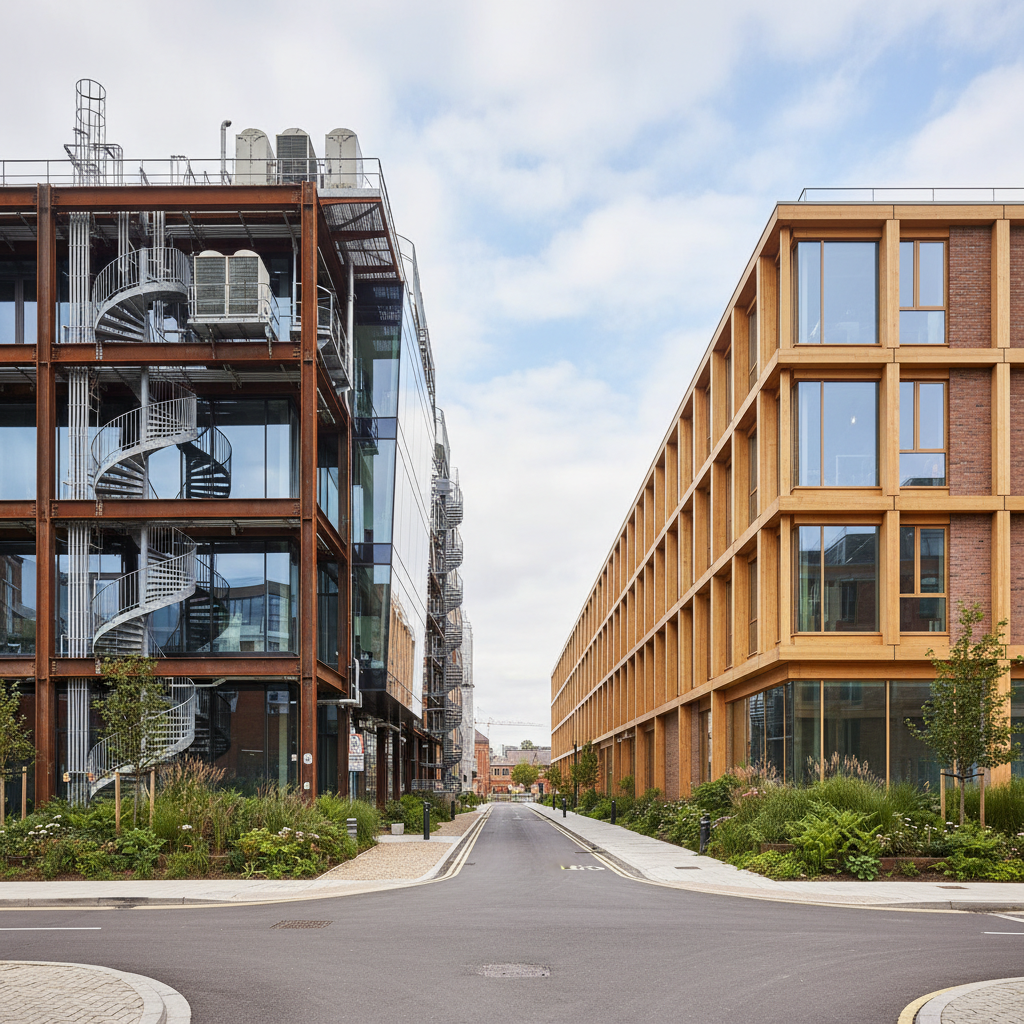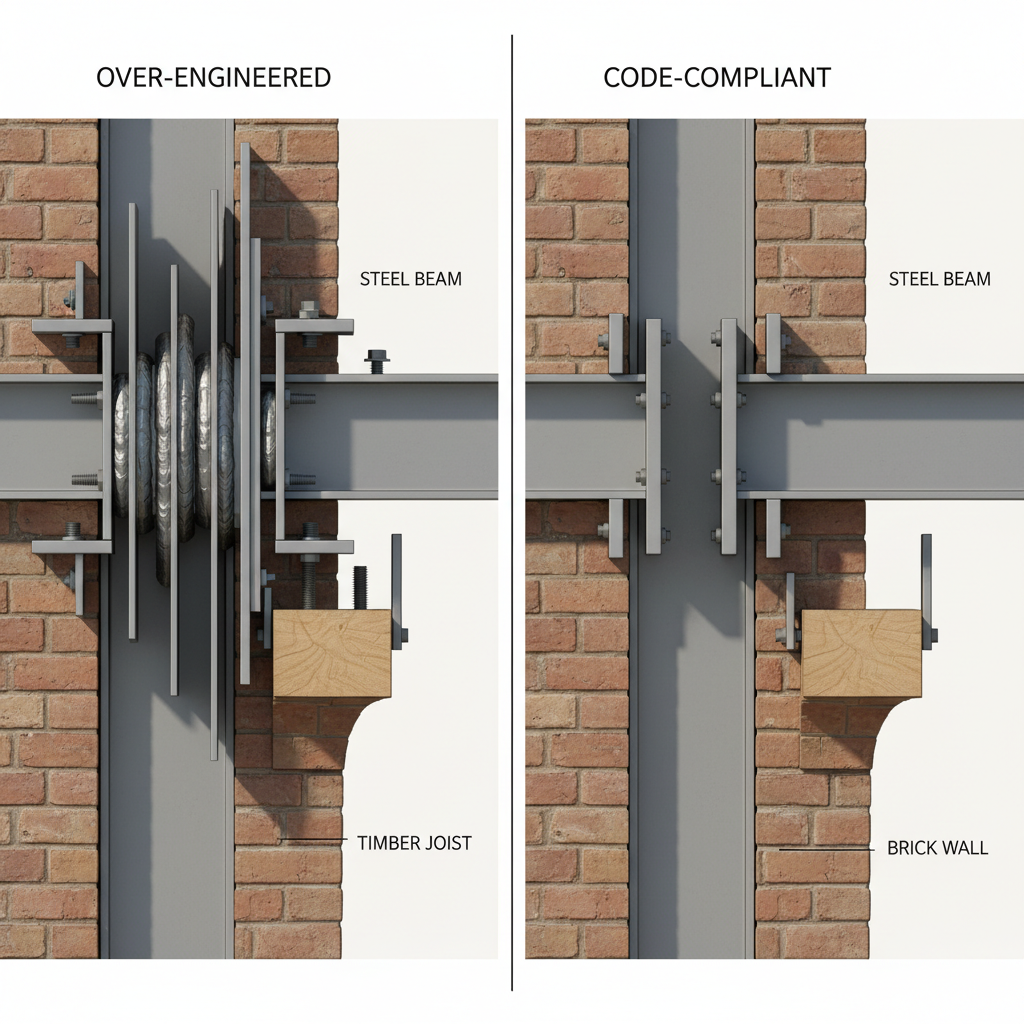
Are We Over-Engineering Buildings? The Case for Simplicity
Modern structural engineering often balances competing demands for safety, efficiency, and innovation. While building codes establish minimum requirements to ensure structural safety, there’s growing discussion in the engineering community about whether some projects have become unnecessarily complex, adding cost without proportional benefit.
Key Highlights
Here are the most important points to understand about potential over-engineering in buildings:
- Over-engineering can add 15-25% to construction costs without proportional safety benefits
- Simplified designs often perform better in real-world conditions than complex alternatives
- Building codes set minimum requirements but don’t dictate maximum engineering parameters
- Modern software tools can help optimize structural designs while maintaining safety margins
- Early collaboration between architects and engineers yields more elegant, efficient solutions
Understanding Engineering Conservatism

Structural engineers traditionally err on the side of caution when designing buildings, applying safety factors that account for uncertainties in materials, construction quality, and loading conditions. These safety margins are essential but can sometimes be layered excessively—each consultant adding their own buffer to calculations. According to data from the Institution of Structural Engineers, a cumulative approach to safety factors can result in structures designed to withstand loads 2-3 times greater than realistically needed, even in worst-case scenarios.
The Compounding Effect of Multiple Safety Factors
When multiple disciplines contribute to a project, each adds their own conservative estimates. The structural engineer might add 15% to load calculations, the geotechnical engineer applies a safety factor to soil bearing capacity, and the materials specification includes additional margins. This compounding effect can lead to significantly overdesigned elements such as foundations that are 30-40% larger than necessary or steel members that could be reduced in size without compromising structural integrity. The core challenge is distinguishing between prudent safety margins and excessive conservatism that adds cost without meaningful benefit.
Optimizing Structural Elements with Modern Analysis

Advanced computational modeling has transformed how structural engineers approach design optimization. Modern software allows engineers to perform sophisticated stress analysis and dynamic simulations that were impossible a generation ago. These tools enable more precise calculations of how structures will respond to various loads and environmental conditions. For example, finite element analysis can identify areas where material can be safely reduced or where structural elements can be reconfigured for better load distribution without compromising safety.
Finding the Middle Ground Between Safety and Efficiency
The most elegant structural solutions typically balance minimum material use with maximum performance. Engineers at Cambridge University have demonstrated that removing up to 40% of material from certain structural elements can be achieved while still meeting all safety requirements when using optimized designs that ensure buildability. This approach requires deeper analysis at the design stage but yields significant material savings and often improves constructability. The key is targeting structural efficiency rather than simply applying blanket safety factors across all components.
Case Studies in Simplified Design

Several recent projects demonstrate how simplified engineering can deliver both performance and value. In a 2022 commercial development in Manchester, engineers reduced the foundation depth by 15% after conducting more detailed site-specific soil testing rather than relying on conservative regional data. This approach saved approximately £175,000 in concrete costs while maintaining all safety margins. Similarly, a modular steel residential project in Leeds used standardized connection details throughout, dramatically reducing fabrication complexity while still meeting all structural requirements.
The Future of Proportionate Engineering
The engineering community is increasingly recognizing that good design isn’t always more complex design. There’s growing emphasis on proportionate engineering—applying the right level of analysis and safety margin appropriate to each project’s specific risks. The myth that more engineering always equals better performance is being challenged by practitioners who focus on first principles and fundamental behavior rather than layering redundant systems. This shift in thinking promises more sustainable construction through reduced material use and typically results in more transparent, easier-to-build structures that perform predictably over their lifespan.
Conclusion
Finding the balance between robust engineering and unnecessary complexity remains a central challenge for today’s structural design professionals. By combining engineering fundamentals with modern analytical tools, it’s possible to design buildings that are simultaneously safe, economical, and elegant. The most successful projects often feature the simplest solutions—not because they’re under-engineered, but because they reflect a sophisticated understanding of how structures actually perform.
Sources
Institution of Structural Engineers: Proportionate Structural Design
Journal of Engineering Structures: Optimization of structural systems
Concrete Centre: Optimised Reinforced Concrete Construction
Steel Construction Info: Cost planning through design stages
